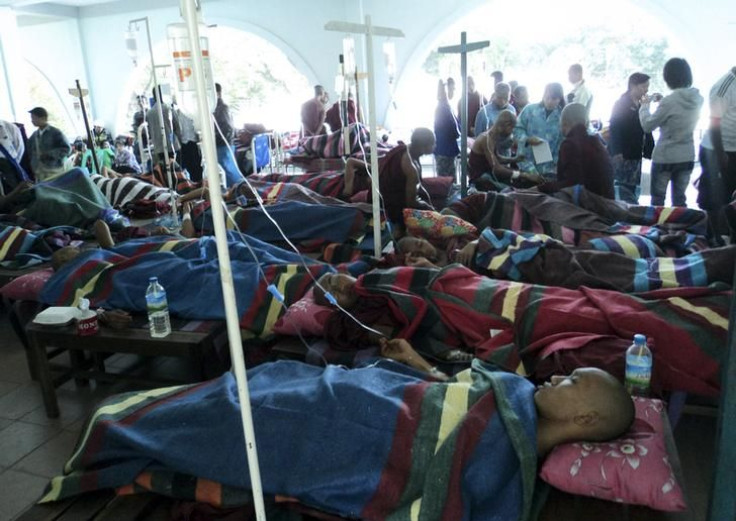Myanmar Police Used White Phosphorus Against Protesters, Human Rights Lawyers Say

Police in Myanmar used white phosphorus grenades to disperse civilians protesting outside a copper mine in November, a group of U.S. and Burmese lawyers charge in a new report.
The protesters, many of them Buddhist monks and villagers, suffered severe burns consistent with the military-grade incendiary weapon, and forensic analysis of the grenade cartridges matched those used to deploy white phosphorus, the report said.
"It's unheard of for police to use incendiary military munitions against peaceful protesters during a law enforcement operation," said Roger Normand, director of the U.S.-based human rights legal group Justice Trust, which compiled the report in collaboration with Burmese lawyers, the BBC reported.
The police crackdown on the protests has prompted criticism of President Thein Sein, whose government has undertaken extensive reforms after five decades of military rule that officially ended with elections in 2010.
“They wanted to warn the entire population not to protest,” said U Thein Than Oo, head of the legal committee of the Upper Burma Lawyers Network, which worked on the report, the New York Times reported. “They wanted to intimidate the people.”
The government established a commission led by opposition leader Aung Sang Suu Kyi to investigate the protests and subsequent police crackdown, but its findings have not been made public.
The protests began several months before the crackdown in November, and centered around villagers’ claims that they had been forced off their land by the government in because of the mine.
The mine, located near the city of Monywa, is jointly owned by a Chinese company and the Burmese military.
© Copyright IBTimes 2024. All rights reserved.











